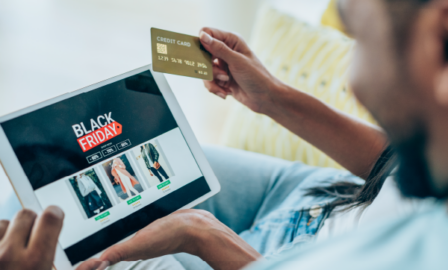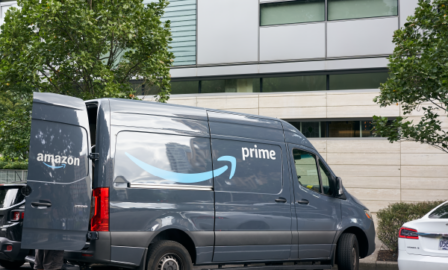4 eCommerce Takeaways from July 2025 Amazon Prime Day
Amazon recently held its 10th annual Prime Day, July 8-11, spanning a record-long four days. During this period, Prime members benefited from discounts across over 35 product categories, from apparel to electronics to household essentials. Amazon declared this year’s Prime Day as its biggest promotion ever, with new marketing strategies and discounts that appealed to shoppers. In this piece, we break down key eCommerce takeaways from the July 2025 Amazon Prime Day.
Outcomes from July 2025 Amazon Prime Day
Amazon Prime Day 2025 was a record-breaking success, generating $24.1 billion in sales. Over the 4-day period:
- A 30.3% increase year over year in sales
- More than 52,000 households participated
- Over 150,000 orders were placed, with an average of $53.34 per order
- $7 billion in sales from mobile devices, accounting for nearly half of all orders (2%)
- Average discounts ranged from 11% to 24%
July 2025 Amazon Prime Day Takeaways
1. Tariff
Prime Day 2025 was the first since this year’s tariffs on Chinese imports, which impacted many Amazon sellers who rely on manufacturing in China. 70% of the products that wholesalers and retailers sell on Amazon are produced in China, and shoppers faced uncertainty about how tariff deadlines would impact prices.
Despite these pressures, Amazon’s CEO Andy Jassy stated in May that he maintained confidence in Amazon’s network of global sellers. He asserted that they would be able to keep prices affordable compared to competitors, especially for essential items.
In addition to tariffs implemented in February and March, anticipation for the enforcement of tariffs announced in April coincided with Amazon’s decision to hold Prime Day one week earlier than usual. The expected July 9 enforcement date, which has since been delayed to August, also caused a lack of consumer confidence about product availability later in the year. This Prime Day, customers took advantage of deep discounts and limited-time deals in preparation for potential price increases.
2. Buy Now, Pay Later
Economic uncertainty has increased cautious purchases, and consumers have turned to buy now, pay later (BNPL) to preserve spending. BNPL was up 13.6% year-over-year and accounted for $2 billion in Prime Day spending this year. It allowed consumers to choose more expensive items, such as electronics and appliances, and pay less upfront, creating a higher average order value and increasing Amazon’s Prime Day earnings.
Costco has also implemented BNPL recently for large purchases, ranging from $500-17,500. This trend towards BNPL has increased sales for retailers as consumers who can’t afford upfront costs are able to make purchases on a payment plan. BNPL’s increasing popularity comes as consumers try to combat high credit card debt.
The United States’ current credit card debt is around $1.2 trillion, a 6% increase from the same quarter last year. BNPL can help minimize credit card debt, but it comes with its own set of risks for the consumer. Consumers who fail to make payments on time can see fees and impacts to their credit score. As BNPL becomes more mainstream, it highlights the need for responsible usage and clear retailer policies regarding BNPL plans.
3. AI Tools
Another significant trend observed during Prime Day 2025 was the influence of AI on shopping activity. Adobe reported a 3,300% surge in traffic from generative AI tools. Additionally, about 34% of shoppers used ChatGPT to research a product before making a purchase.
Amazon’s own AI-powered tools also played a role in boosting engagement and sales. Amazon leveraged their shopping assistant Rufus, introduced their new generative AI personal assistant Alexa+ (which is still in early access stages), and offered AI shopping guides – each to help promote customer shopping by providing quick access to deals and product information.
Following the successful Prime Day 2025, Amazon plans to launch a marketplace designed for developers and startups to offer AI agents to enterprise clients through Amazon Web Services (AWS). AWS recently formed a dedicated agentic AI group to support this effort. Matt German, AWS’s chief executive, stated that this direction has the potential to become a multibillion-dollar business for the cloud division.
4. Competing Deals
While Prime Day generated a lot of conversation, it wasn’t the only large sale this time of year. Retailers like Walmart, Target, and Costco also set up big sales in the same time period. Walmart deals ran from July 8-13, overlapping with Prime Day and offering discounts on the same products as Amazon but at lower prices. Target Circle Week offered savings up to 50% from July 6-12 and encouraged shoppers to join their loyalty program, Target Circle, to access even more exclusive deals.
Prime Day’s longer period of four days allowed shoppers to do more research and look into other deals and make price comparisons from these competing sales to find the best value across the competing platforms. Shoppers could weigh not only price, but shipping costs, return policies, and added perks from loyalty programs. As these sales challenged Prime Day, they represent a push towards specialized large event sales. These large mid-year sales are encouraging consumers to shop smarter and have increased competition among many large retailers.
Looking Ahead
The takeaways from this year’s Prime Day are crucial for eCommerce organizations to refine their retail strategies moving forward. Tariffs and inflation continue to shape consumer behavior, and monitoring this sentiment enables resilience in a rapidly changing landscape.
To ease the financial strain of large purchases for the customer, BNPL is becoming a popular offering among retailers to drive sales. Increases in competing sales mean that retailers must focus on differentiation to stand out in a competitive market. Additionally, AI tools are an increasingly important component of differentiation, and Amazon seeks to push the boundaries of user experience through innovative applications.
If your eCommerce organization seeks to discuss these Prime Day takeaways further, contact Clarkston’s experts today.
Subscribe to Clarkston's Insights
Contributions by Natalie Pollock, Ishank Shekhar, and Hannah Yang



